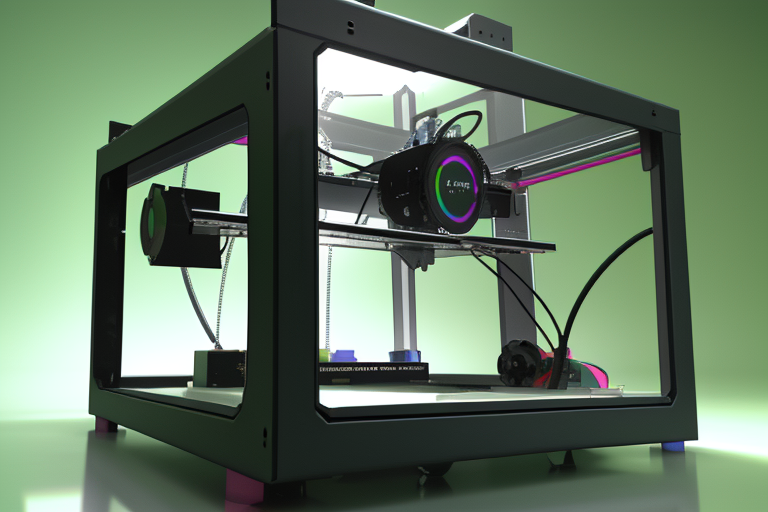The few most common types of desktop 3D printers right now are FDM, SLA and SLS printers.
FDM (Fused Deposition Modeling) and FFF (Fused Filament Fabrication) are essentially the same 3D printing technology, and they use the same types of materials. The terms FDM and FFF are often used interchangeably to refer to the same additive manufacturing process.,
FFF is usually lower in price and operating cost but compromising on lower print resolution and warping on accumulated heat stress. FDM printers also can accept a wider range of materials than FFF.
FDM printers generally can handle engineering polymers with higher melting points. Some common engineering polymers includes:
Polycarbonate (PC) – Approximately 230-250°C
High impact strength, excellent clarity, good dimensional stability, and heat resistance.
Polyether Ether Ketone (PEEK) – Approximately 335-343°C
Exceptional mechanical properties, high chemical resistance, high temperature resistance, and excellent dimensional stability.
Polyphenylsulfone (PPSU) – Approximately 220-230°C
Excellent chemical resistance, high heat resistance, good toughness, and hydrolytic stability.
Polyetherimide (PEI) (also known as ULTEM) – Approximately 215-217°C
High strength and rigidity, excellent thermal stability, good chemical resistance, and low smoke and toxicity emissions.
Polyamide-imide (PAI) – Approximately 305-312°C
Exceptional mechanical properties, excellent thermal stability, high strength, and resistance to wear and chemicals.

SLA 3D printers use light-reactive thermoset materials called “resin” and utilize certain wavelengths of light to solidify geometries. If you have an SLA or DLP printer, you would require liquid resin materials.
SLA printers using photopolymer resins of varied mechanical properties varying in strength, flexibility, and hardness.
Standard Resin:
Tensile Strength: 40-60 MPa
Young’s Modulus: 1.5-3 GPa
Flexural Strength: 70-80 MPa
Flexural Modulus: 1.5-3 GPa
Impact Strength: 10-20 kJ/m²
Hardness (Shore D): 70-90
High-Resolution Resin:
Tensile Strength: 30-50 MPa
Young’s Modulus: 1-2 GPa
Flexural Strength: 60-70 MPa
Flexural Modulus: 1-2 GPa
Impact Strength: 5-10 kJ/m²
Hardness (Shore D): 60-80
Flexible Resin:
Tensile Strength: 10-30 MPa
Young’s Modulus: 0.2-0.5 GPa
Flexural Strength: 10-20 MPa
Flexural Modulus: 0.1-0.3 GPa
Impact Strength: 5-10 kJ/m²
Hardness (Shore A): 40-60
Tough Resin:
Tensile Strength: 50-70 MPa
Young’s Modulus: 2-3 GPa
Flexural Strength: 80-100 MPa
Flexural Modulus: 2-3 GPa
Impact Strength: 10-30 kJ/m²
Hardness (Shore D): 80-90
Heat-Resistant Resin:
Tensile Strength: 50-70 MPa
Young’s Modulus: 1-2 GPa
Flexural Strength: 70-90 MPa
Flexural Modulus: 1-2 GPa
Impact Strength: 10-20 kJ/m²
Hardness (Shore D): 70-90
Clear Resin:
Tensile Strength: 40-60 MPa
Young’s Modulus: 1-2 GPa
Flexural Strength: 70-80 MPa
Flexural Modulus: 1-2 GPa
Impact Strength: 10-20 kJ/m²
Hardness (Shore D): 80-90
SLS 3D printers use polymer powder that produces excellent mechanical properties. Some of the commonly used materials include:
Nylon (polyamide) powders: High strength, toughness, and resistance to wear.
TPU (Thermoplastic Polyurethane) powders: Good flexibility, elasticity, and impact resistance.
Polycarbonate (PC) powders: High strength, stiffness, and impact resistance.
Metal powders (for metal SLS): Mechanical properties depend on the specific metal used, offering a wide range of strengths, ductility, and thermal properties.